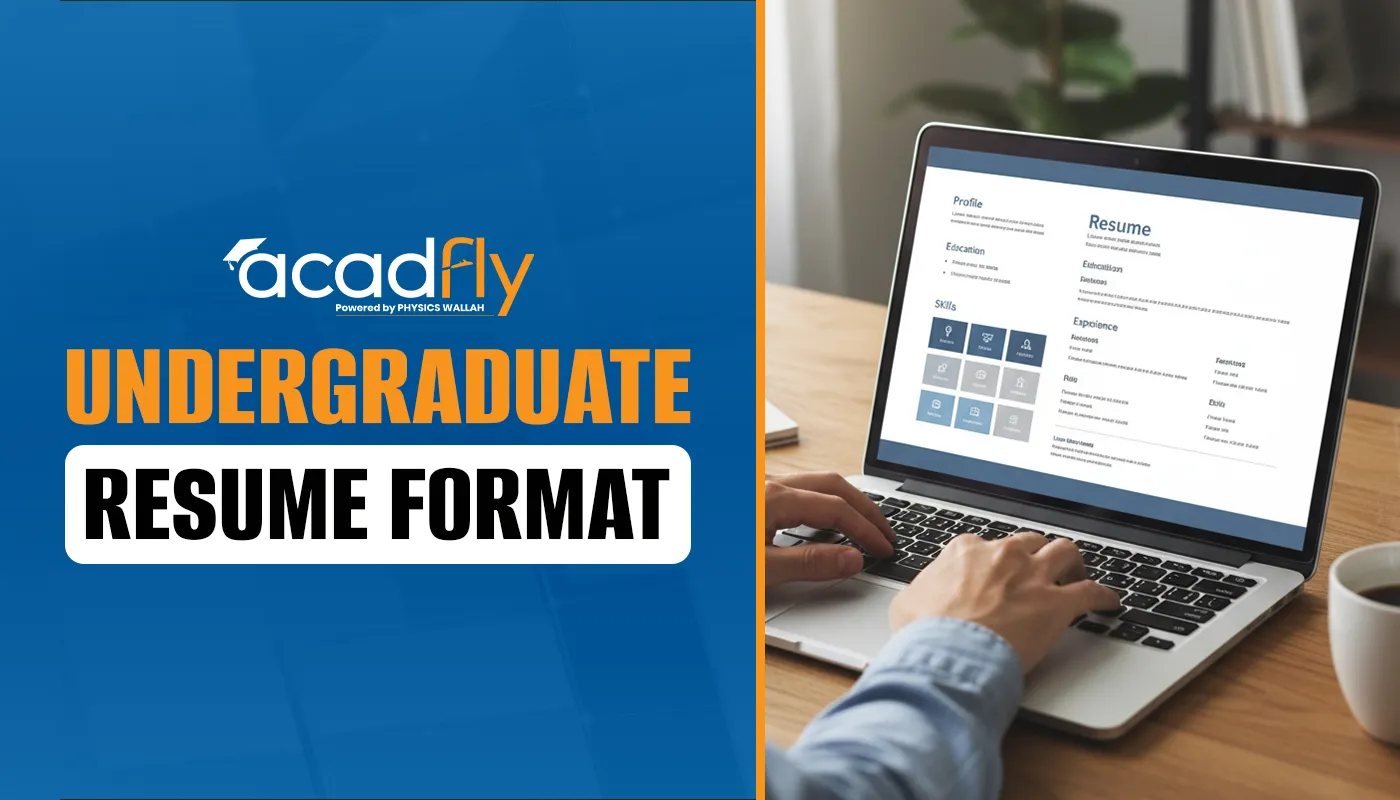


Undergraduate resume formats are to be one page long and well formatted with distinct areas of contact details, education and skills, experience, and other relevant achievements. The resume must start with a short objective statement, then education section (specifying when you are expected to graduate and any other coursework), summary of your key skills, experience (including internships) section, volunteer experience section and awards/honours segment.
In the case that the professional experience is small, a combination or functional resume format would be advisable in order to emphasize skills and academics/education highlights over work experience. Everywhere in your resume, be concise, apply action verbs, and estimate your achievements as an added value.
Making your resume as an undergraduate student could be a game-changer to securing an internship, part-time jobs or even first-time full-time employment. When you are embarking on your first career move it means that you have the best idea of how to format your resume and this will place you ahead in the job-seeking game.
Undergraduate Resume Format Importance
A potential employer or internship coordinator may get the first impression of you through your resume. A good resume format is used by undergraduates to demonstrate skills, experiences and education in a well-organised manner that is persuasive. As most students lack substantial amounts of professional experience, the prioritization should be made on academic performances, pertinent projects, volunteer work, and competencies.
A proper undergraduate resume format will be able to present the best about you and also will make the application attractive enough, as well as it will not leaving the reader overwhelmed with a lot of information. This document must be a brief and simple document focused on the opportunity you are looking to get. It is important to remember that the format of your resume is just as crucial as the contents since it will render the reader your story in a logical and interesting way.
Undergraduate Resume Format For Freshers: Important Parts
Undergraduate resume format for freshers should have a balance between presenting your academic background and any experience that you have, which is why a recruiter can easily view both your qualifications and prospective.
An effectively designed undergraduate resume generally has the following parts:
-
Contact Information: Name, phone number, email address, LinkedIn or personal website address (where applicable).
-
Objective or Summary: A very short statement that summarizes your academic focus, skills and what you are trying to accomplish.
-
Education: Name of your college/university, degree, major and date of expected graduation and pertinent coursework or scholarly award.
-
Experience: This may be an internship, part-time, volunteer or campus leadership. Action verbs describe your contributions unambiguously.
-
Skills: Include technical, software and soft skills applicable to the position.
-
Projects (Optional): Academic or personal project demonstrating your experience and problem-solving skills.
Resume Objectives For Undergraduate Resumes
The resume objective is a small statement that you can write at the top of your resume that summarizes what you are seeking as well as what you can offer to the table. In the case of an undergraduate who is only beginning, it must be a clear reflection of what you want to achieve and what skills or experience qualify you as a good fit.
An example of a good objective is: Motivated undergraduate student in a degree course in Computer Science with excellent coding and solving of problems skills, looking to be included in software development projects via an internship opportunity. This creates a tone and provides the recruiter with a sense of concentration and passion.
Write your purpose with the job that you are applying for. Personalize the statement to each application with keywords in the job description which will also assist in passing automated tracking systems.
Formatting Undergraduate Resume
Formatting your resume in a Word document, tips are given below:-
-
In any word processor, such as Word, simplicity and readability are important when formatting your resume.
-
Set your font size at 10 to 12 points and use fonts that are easy to read such as Arial, Calibri, or Times New Roman.
-
The margins must not be less than 0.5 inches all around, as it would be overcrowded with content.
-
If you can, keep your resume on one page, and enumerate your duties and accomplishments by use of bullet points.
-
Use bold font or a slightly larger font to emphasize section headings to make the text easier to read.
-
Do not use graphics, pictures or too many colours- unless you are seeking a creative job and such details may be welcome.
-
To save your resume in the form of a PDF file prior to giving it, make sure that the formatting is not lost when your file is opened by recruiters.
-
The word template of undergraduate resumes may help to save some time and to make your document look clean and professional.
How To Present Projects And Skills On an Undergraduate Resume
Although you might not have formal job experience, you can mention academic projects or group work, which can convey your professional experience and independence. In outlining projects, you should describe what you did, what skills were used, what the project achieved or what you learned.
In the case of skills, these can be subdivided into categories such as technical skills (software, programming languages), language skills, and soft skills such as teamwork or communication. Aligning your expertise with those demanded by the job in the exact terms used in the job posting makes your resume look more relevant and efficient.
This part comes in particularly handy in the undergraduate resume form of freshers, where you can show that you are ready to join the working environment as well as you are willing to learn and contribute.
